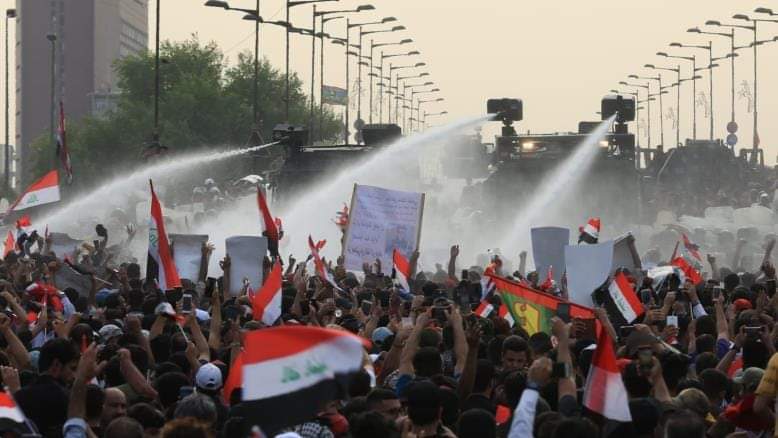- 22 أكتوبر، 2019

The Higher Ministerial Committee investigating the cause of casualties in Baghdad and other provinces issued its report. After its formation on October 12, 2019.
This report, which provoked a wave of discontent with its content, we assessed the content of the report based on the information available to us by monitoring the demonstrations and events in general.
We summarized our observations with fifteen points:
- The Committee recognized the use of excessive violence against demonstrators.
- The Commission stated that there was a weakness in command and control by (some) security leaders, but it did not justify this conclusion, nor did it support it with evidence.
- The report of the Commission stated that there were demonstrators who had burned down government institutions, the number of which did not specify what they were and how much damage had been done.
This information sheds light on the government narrative that has been frequently echoed about the destruction of public property, and at times this story has been used to justify the use of excessive violence against demonstrators.
- The report stated that some demonstrators threw Molotov cocktails and that there was gunfire in some demonstration yards
Once again, the report did not specify where these abuses took place and how they took place under tight procedures.
- The report links non-compliance with curfews and resentment at high prices. Strangely and irrationally.
- The report stated that the CMC did not take enough action against the media inciting hatred.
It is important to note here that the issue of demonstrations is far from this, and we believe that it is an argument for restricting press freedom.
- In its report, the Commission says that no order has been issued by the High Command to shoot at the demonstrators. How can the Commission justify the shooting of demonstrators in almost all places of demonstration in Iraq? Is it possible that they are all individual decisions?
Also, the shooting of the demonstrators continued from the first day on October 1, and then in the following days, why did not the leadership take any action on this?
- The Commission acknowledged that the denial of access to Tahrir Square had led to the dispersal of the work of the security forces and considered it a mistake.
- The Commission recognized that 70% of the injuries among the demonstrators were in the head and chest, which indicates that the shooting was intended for murder, and from professional persons.
- . The report makes no mention of forcibly disappeared activists and demonstrators, without judicial warrants or status.
- The Commission did not talk about those who carried out the attacks on the demonstrators, and are they armed bodies of influential persons?
- The Commission also failed to state its findings regarding the assassinations carried out against activists and demonstrators in Basra and Baghdad.
- The Commission did not address the officials’ inciting statements against the demonstrators, which they described as saboteurs, and publicly threatened the demonstrators with violence.
The Commission has also failed to demonstrate the authenticity of the leaked audio recordings of officials inciting police officers to use violence against demonstrators.
To download the evaluation report in English,and Arabic:
Evaluation of the report of the Higher Ministerial Committee

